Do you have a question about the Cessna Citation XLS and is the answer not in the manual?
Fail-passive autopilot/flight director system with guidance modes.
Standby display showing attitude, altitude, airspeed, Mach, and magnetic heading.
Standby HSI for heading, short range navigation, and approach information.
Details airspeed tape, rolling digits, trend vector, and scale range.
How V-Speeds are selected, displayed, and removed from the airspeed tape.
Explains airspeed limits, visual cues, and aural alerts for overspeed conditions.
Illustration and explanation of the airspeed display format and indicators.
Description of the red thermometer display for low airspeed indication.
Details the digital Mach number readout and its display conditions.
Explains the altitude display format, vertical tape, and scale range.
Explains vertical speed data development and display.
Describes slip skid display for coordinated flight indication.
Mentions magnetic heading display on SFD.
States where Ram Air Temperature is displayed.
Location and function of the true airspeed probe for data computation.
Location, purpose, and display elements of the standby HSI.
Description of the GH-3000 ESIS, its functions, power, and initialization.
Built-in test feature for automatic failure detection at power up and operation.
Procedures for navigating submenus and selecting functions using the adjustment knob.
Details engine parameters displayed on AMLCD screens, including normal and reversionary modes.
Illustration of the AMLCD display format for engine parameters.
Calibration and operation details for ITT, oil pressure/temp, fuel flow/temp/quantity.
Function and operation of the flight hour meter.
Integrated digital clock on MFD/PFDs and secondary clock on center panel.
Details clock functions, setting, stopwatch, and countdown modes.
System components and function of the stall warning and AoA system.
Describes AoA indicator scale, ranges, and stick shaker activation.
Overview of the standard avionics package and optional equipment.
Details the Honeywell Primus II RCZ-833 communication unit and RMU controls.
Discusses tuning methods, memory storage, and frequency management.
Direct tuning, stuck mic protection, TX annunciation, and bandwidth selection.
Details the RMU controls and functions.
Describes the SRC unit's modes and power source.
Explains SRC operation in normal/emergency modes, tuning, and audio features.
Details the RNZ-850 integrated navigation unit.
Details the DF-850 ADF receiver module and its frequency range.
Explains ADF modes, tuning, and scratch pad memory.
Explains the XS-850 transponder module, its functions, and tuning.
Details transponder operational modes and memory storage.
Describes the Primus II DME system and its tuning.
Explains VOR/ILS/DME operations, split tuning, and TACAN channel presentation.
Describes the two identical Honeywell Primus II digital audio control units.
Details panel switches, knobs, microphone selectors, and ID/VOICE selector.
Explains the CVR system, operation, testing, and erasure procedures.
Details the Artex C406-2 ELT system, activation, and testing.
Explains FDR requirements, operation, and failure annunciation.
Describes the AirCell ST 3100 system for voice and data communication.
Details the MagnaStar C-2000 telephone system capabilities.
Explains handset operations, call placement, and Aircall numbers.
Overview of the integrated autopilot/flight director system.
Describes AHRS as the primary source of attitude and heading information.
Explains AHRS modes, system alignment, and reversion switches.
Explains how FD modes are annunciated on the PFD.
Lists various annunciations and their meanings.
Details of annunciations like AOA, FMS modes, speed, wind shear, and ground proximity.
Describes the MS-560 selector switches and mode selection process.
Describes the autopilot control panel functions, engagement, and trim indicator.
Explains annunciators for autopilot pitch and roll mistrim.
Explains the altitude alerting system's visual and aural indications.
Overview of the Primus 1000 system's capabilities and integration.
Describes basic autopilot functions like pitch, roll, and heading hold.
Explains how TCS enables manual maneuvering during autopilot operation.
Describes HDG mode selection and interaction with HSI and autopilot.
Explains VOR and APR modes for enroute navigation and approaches.
Details the BC approach capability and its setup.
Explains ALT and ASEL modes for maintaining or preselecting altitude.
Explains FLC and VS modes for airspeed and vertical speed control.
Explains the function of the go-around mode.
Describes matching command bars to pitch attitude using TCS.
Overview of EFIS components and their integration.
Details the display controller's functions and individual controls.
Details MFD controls like HSI, TCAS, WX/TERR, BARO/RAD, NAV, FMS, Bearing, DIM, Radio Alt, and Test.
Explains the functions of HDG REV and ATT REV switches.
Explains EFIS backup modes and radome cooling fan status.
Lists and explains various EFIS annunciators for overtemperature and failure conditions.
Describes ADI displays, failure, and mode annunciations.
Discusses HSI displays: FULL TIME, PART TIME, and arc mode.
Describes FD couple arrow, low altitude awareness, glideslope, command cues, radio altitude, and source annunciations.
Shows a typical PFD display with TCAS overlay and flight plan data.
Lists caution and failure annunciations for ADI and related systems.
Explains how excessive attitude removes symbology from PFD.
Discusses always-present HSI displays like airplane symbol, heading, CDI, TO/FROM, distance, and nav sources.
Discusses part-time displays like bearing pointers, elapsed time, ground speed, desired track, nav source, and wind.
Explains HSI arc mode presentation and amber caution annunciations.
Describes heading comparator warnings and red failure annunciations for deviation, vertical speed, and navigation indicators.
Details compared parameters, annunciations, and triggering differences for pilot/copilot data.
Lists EFIS failures, annunciations, and required pilot actions.
Overview of the MFD system, controller, and modes of operation.
Explains the MAP and PLAN modes for navigation display.
Describes TCAS II operation and display.
Explains the WX mode for weather radar display on MFD.
Explains entry into normal and emergency checklist modes via MC-800.
Describes the waypoint listing mode display showing flight plan data.
Details MFD controls like Dim/Off, Joystick, MAP/PLAN, WX, VOR, APT, DAT.
Shows a typical MFD display with flight plan and TCAS overlay.
Details Range Controls, NORM/EMER checklists, RCL, SKP, PAG, ENT functions.
Overview of the EGPWS system and its functions.
Explains the sink rate warning mode and its alerts.
Explains the excessive closure rate to terrain warning.
Explains the landing closure rate warning.
Explains the descent after takeoff warning.
Explains terrain proximity warning with landing gear retracted.
Explains terrain proximity warning with flaps up.
Explains terrain proximity warning after takeoff.
Explains the descent below glide slope alert.
Explains callouts and bank angle warnings.
Describes the EGPWS self-test procedure and expected annunciations.
Explains TCAS II system functions, data processing, and threat categorization.
Details TCAS operation, range/altitude band selection, and self-test.
Explains TCAS display symbology, color coding, and range rings.
Describes the AA-300 radio altimeter display and DH selection.
Explains the brown strip visual annunciation for nearness to ground.
Explains functional testing of the radio altimeter and EFIS components.
Overview of the weather radar system, its functions, and controls.
Explains the radar mode switch functions (OFF, SBY, WX, GMAP).
Shows a typical MFD display with weather radar overlay.
Details the radar controller buttons and rotary controls for mode selection and adjustment.
Explains PFD WX radar operating mode annunciations in the mode field.
Overview of the FMS system, its capabilities, and navigation sensors.
Notes on single DME operation and reference to the FMS Operator's Manual.
Illustration of the FMS control display unit (CDU) interface.
Fail-passive autopilot/flight director system with guidance modes.
Standby display showing attitude, altitude, airspeed, Mach, and magnetic heading.
Standby HSI for heading, short range navigation, and approach information.
Details airspeed tape, rolling digits, trend vector, and scale range.
How V-Speeds are selected, displayed, and removed from the airspeed tape.
Explains airspeed limits, visual cues, and aural alerts for overspeed conditions.
Illustration and explanation of the airspeed display format and indicators.
Description of the red thermometer display for low airspeed indication.
Details the digital Mach number readout and its display conditions.
Explains the altitude display format, vertical tape, and scale range.
Explains vertical speed data development and display.
Describes slip skid display for coordinated flight indication.
Mentions magnetic heading display on SFD.
States where Ram Air Temperature is displayed.
Location and function of the true airspeed probe for data computation.
Location, purpose, and display elements of the standby HSI.
Description of the GH-3000 ESIS, its functions, power, and initialization.
Built-in test feature for automatic failure detection at power up and operation.
Procedures for navigating submenus and selecting functions using the adjustment knob.
Details engine parameters displayed on AMLCD screens, including normal and reversionary modes.
Illustration of the AMLCD display format for engine parameters.
Calibration and operation details for ITT, oil pressure/temp, fuel flow/temp/quantity.
Function and operation of the flight hour meter.
Integrated digital clock on MFD/PFDs and secondary clock on center panel.
Details clock functions, setting, stopwatch, and countdown modes.
System components and function of the stall warning and AoA system.
Describes AoA indicator scale, ranges, and stick shaker activation.
Overview of the standard avionics package and optional equipment.
Details the Honeywell Primus II RCZ-833 communication unit and RMU controls.
Discusses tuning methods, memory storage, and frequency management.
Direct tuning, stuck mic protection, TX annunciation, and bandwidth selection.
Details the RMU controls and functions.
Describes the SRC unit's modes and power source.
Explains SRC operation in normal/emergency modes, tuning, and audio features.
Details the RNZ-850 integrated navigation unit.
Details the DF-850 ADF receiver module and its frequency range.
Explains ADF modes, tuning, and scratch pad memory.
Explains the XS-850 transponder module, its functions, and tuning.
Details transponder operational modes and memory storage.
Describes the Primus II DME system and its tuning.
Explains VOR/ILS/DME operations, split tuning, and TACAN channel presentation.
Describes the two identical Honeywell Primus II digital audio control units.
Details panel switches, knobs, microphone selectors, and ID/VOICE selector.
Explains the CVR system, operation, testing, and erasure procedures.
Details the Artex C406-2 ELT system, activation, and testing.
Explains FDR requirements, operation, and failure annunciation.
Describes the AirCell ST 3100 system for voice and data communication.
Details the MagnaStar C-2000 telephone system capabilities.
Explains handset operations, call placement, and Aircall numbers.
Overview of the integrated autopilot/flight director system.
Describes AHRS as the primary source of attitude and heading information.
Explains AHRS modes, system alignment, and reversion switches.
Explains how FD modes are annunciated on the PFD.
Lists various annunciations and their meanings.
Details of annunciations like AOA, FMS modes, speed, wind shear, and ground proximity.
Describes the MS-560 selector switches and mode selection process.
Describes the autopilot control panel functions, engagement, and trim indicator.
Explains annunciators for autopilot pitch and roll mistrim.
Explains the altitude alerting system's visual and aural indications.
Overview of the Primus 1000 system's capabilities and integration.
Describes basic autopilot functions like pitch, roll, and heading hold.
Explains how TCS enables manual maneuvering during autopilot operation.
Describes HDG mode selection and interaction with HSI and autopilot.
Explains VOR and APR modes for enroute navigation and approaches.
Details the BC approach capability and its setup.
Explains ALT and ASEL modes for maintaining or preselecting altitude.
Explains FLC and VS modes for airspeed and vertical speed control.
Explains the function of the go-around mode.
Describes matching command bars to pitch attitude using TCS.
Overview of EFIS components and their integration.
Details the display controller's functions and individual controls.
Details MFD controls like HSI, TCAS, WX/TERR, BARO/RAD, NAV, FMS, Bearing, DIM, Radio Alt, and Test.
Explains the functions of HDG REV and ATT REV switches.
Explains EFIS backup modes and radome cooling fan status.
Lists and explains various EFIS annunciators for overtemperature and failure conditions.
Describes ADI displays, failure, and mode annunciations.
Discusses HSI displays: FULL TIME, PART TIME, and arc mode.
Describes FD couple arrow, low altitude awareness, glideslope, command cues, radio altitude, and source annunciations.
Shows a typical PFD display with TCAS overlay and flight plan data.
Lists caution and failure annunciations for ADI and related systems.
Explains how excessive attitude removes symbology from PFD.
Discusses always-present HSI displays like airplane symbol, heading, CDI, TO/FROM, distance, and nav sources.
Discusses part-time displays like bearing pointers, elapsed time, ground speed, desired track, nav source, and wind.
Explains HSI arc mode presentation and amber caution annunciations.
Describes heading comparator warnings and red failure annunciations for deviation, vertical speed, and navigation indicators.
Details compared parameters, annunciations, and triggering differences for pilot/copilot data.
Lists EFIS failures, annunciations, and required pilot actions.
Overview of the MFD system, controller, and modes of operation.
Explains the MAP and PLAN modes for navigation display.
Describes TCAS II operation and display.
Explains the WX mode for weather radar display on MFD.
Explains entry into normal and emergency checklist modes via MC-800.
Describes the waypoint listing mode display showing flight plan data.
Details MFD controls like Dim/Off, Joystick, MAP/PLAN, WX, VOR, APT, DAT.
Shows a typical MFD display with flight plan and TCAS overlay.
Details Range Controls, NORM/EMER checklists, RCL, SKP, PAG, ENT functions.
Overview of the EGPWS system and its functions.
Explains the sink rate warning mode and its alerts.
Explains the excessive closure rate to terrain warning.
Explains the landing closure rate warning.
Explains the descent after takeoff warning.
Explains terrain proximity warning with landing gear retracted.
Explains terrain proximity warning with flaps up.
Explains terrain proximity warning after takeoff.
Explains the descent below glide slope alert.
Explains callouts and bank angle warnings.
Describes the EGPWS self-test procedure and expected annunciations.
Explains TCAS II system functions, data processing, and threat categorization.
Details TCAS operation, range/altitude band selection, and self-test.
Explains TCAS display symbology, color coding, and range rings.
Describes the AA-300 radio altimeter display and DH selection.
Explains the brown strip visual annunciation for nearness to ground.
Explains functional testing of the radio altimeter and EFIS components.
Overview of the weather radar system, its functions, and controls.
Explains the radar mode switch functions (OFF, SBY, WX, GMAP).
Shows a typical MFD display with weather radar overlay.
Details the radar controller buttons and rotary controls for mode selection and adjustment.
Explains PFD WX radar operating mode annunciations in the mode field.
Overview of the FMS system, its capabilities, and navigation sensors.
Notes on single DME operation and reference to the FMS Operator's Manual.
Illustration of the FMS control display unit (CDU) interface.
| Manufacturer | Cessna |
|---|---|
| Model | Citation XLS |
| Category | Business Jet |
| Crew | 2 |
| Max Takeoff Weight | 20, 200 lb (9, 163 kg) |
| Service Ceiling | 45, 000 ft (13, 716 m) |
| Length | 52 ft 6 in |
| Wingspan | 56 ft 4 in |
| Height | 17 ft 2 in |
| Maximum Speed | 507 mph |
| Cruise Speed | 441 knots |
| Engines | 2 × Pratt & Whitney Canada PW545B |
| Takeoff Distance | 3, 560 ft |
| Landing Distance | 3, 180 ft |
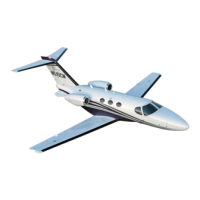

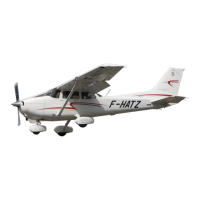
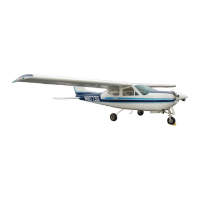
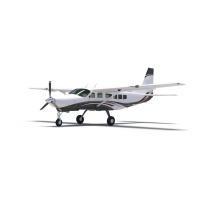

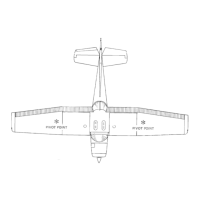

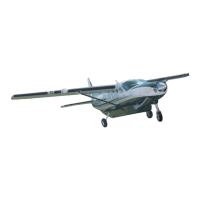

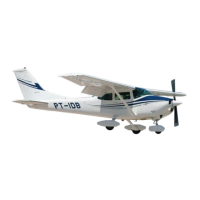

